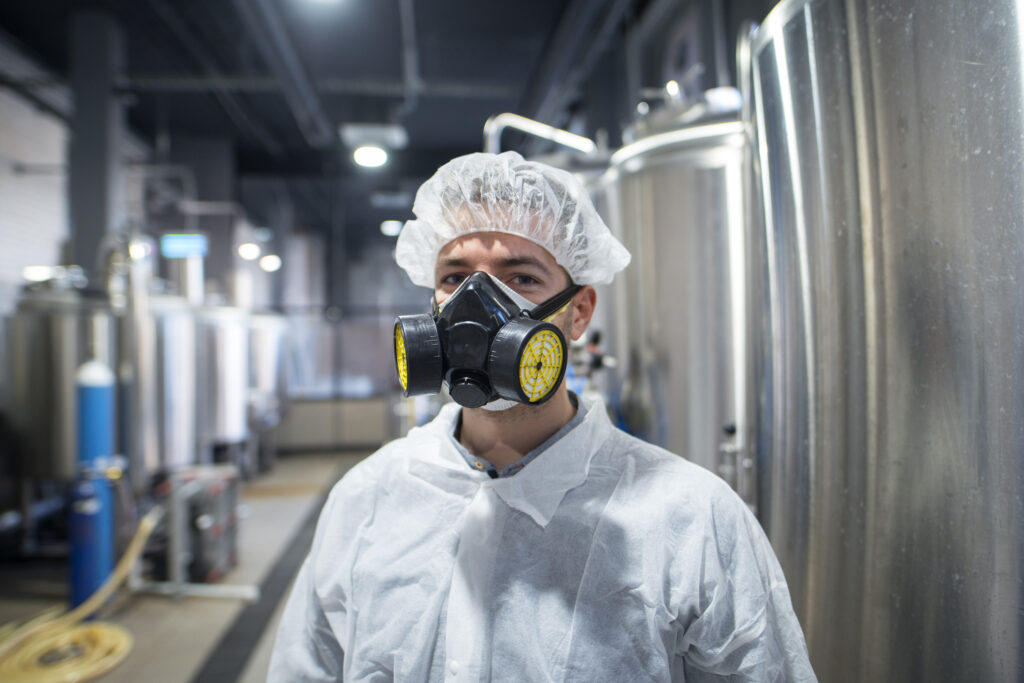Over 10 percent of lung disease cases around the world are estimated to be caused by workplace exposure, according to data from the United Nations. From carcinogens to airborne infectious agents, respiratory protection training can mitigate many workplace hazards. This guide will explore the definition of respiratory protection, types of contaminants in the workplace, and methods of protection and training that individuals working in occupational health and safety can adopt.
Definition of Respiratory Protection in the Workplace
Respiratory protection is a critical aspect of occupational health and safety, designed to protect professionals in all types of workplaces from known airborne contaminants. Proper respiratory protection training seeks to reduce the exposure of workers to these contaminants. This can be achieved by reducing airborne pollution and providing employees with the equipment and knowledge needed to protect their respiratory systems. Training for respiratory protection in the workplace can be beneficial even in environments that are not exposed to fumes, gasses, or other facility-specific pollutants.
Types of Contaminants That Affect Respiratory Health
Workplace contaminants vary across industries, but these hazards can be present in many indoor facilities:
- Carbon monoxide
- Tobacco smoke
- Bacteria and viruses
- Excessive dust
- Solvent vapors
- Welding fumes
Air pollution in the workplace can not only increase the risk of lung diseases but also worsen preexisting conditions for employees. Some contaminants are by-products of the work, particularly in a factory setting, but many are preventable additions to the workplace air. Respiratory protection training identifies potential contaminants and addresses solutions to limit or prevent indoor air pollution.
Advance Your Public Health Career with an MSPH in Industrial Hygiene
Pursue Your Degree Online From Tulane University
Effects of Exposure
The effects of exposure to airborne contaminants can vary but may have serious long-term consequences. Here are just a few effects that can be linked to airborne particle pollution in the workplace:
- Respiratory infections
- Asthma development
- Lung disease
- Emergency department visits
- Decreased pulmonary and/or lung function
- Premature mortality
Exposure to airborne pollution can increase the risk of these effects and exacerbate preexisting conditions. Employees who are sensitive to pollution-related health effects are at a higher risk. Still, exposure to workplace airborne pollution can affect even employees without any preexisting conditions if they do not have the proper training and personal protective equipment (PPE).
Methods of Respiratory Protection
Industrial hygienists work to analyze and predict hazards in the workplace. While these professionals research effective respiratory protection training, they must also follow regulatory standards to ensure compliance with workplace safety. The Occupational Safety and Health Administration (OSHA) Respiratory Protection Standard covers the required respiratory protection methods and use of respiratory equipment. Here are some of the basic methods of respiratory protection outlined in the standard:
- Write standards and practices.
- Identify respiratory hazards.
- Select compliant respiratory PPE.
- Ensure proper use of protective equipment.
- Safely store and maintain equipment.
- Review signs and symptoms of respiratory illness.
- Document employee training.
In addition to identifying respiratory hazards, industrial hygienists and other occupational health and safety professionals should research prevention strategies for maintaining a safe workplace.
The Importance of Respiratory Protection Training
Without respiratory protection training, improperly used and stored equipment will be unlikely to keep employees safe from environmental hazards. One of the most common examples is improper respirator use. Whether the workplace concern is a virus, such as COVID-19, or a by-product of a workplace process, such as welding fumes, these factors highlight the importance of proper training for respirators.
Proper Use of Personal Protective Equipment
For respirators and other PPE to comply with OSHA standards and protect employees, they must be rated for the area of use. After the optimal equipment is selected, employees should be trained on how to correctly put on respirators to avoid contamination.
Effective Maintenance and Storage of Respirators
Respirators are frequently improperly stored, increasing the likelihood of contamination. If a respirator is exposed to a hazardous environment before being worn, then its effectiveness is compromised.
Respirators, cartridges, and filters also have limited lifetimes. After the expiration date or after the PPE is compromised, the equipment should be promptly replaced to avoid workplace hazards.
Prompt Medical Evaluation
Some workplace respiratory issues happen after just one exposure, while others are the cumulative effect of breathing in contaminated air. Whether dealing with airborne pollutants or bacteria and viruses, workplace training protocols should include routine medical evaluations to catch the early warning signs of a respiratory issue.
Learn More About Respiratory Health
As a prospective student or professional working in occupational health and safety, understanding the importance of respiratory health training is critical to your career path. Discover how an Online Master of Science in Public Health in Industrial Hygiene (MSPH IH) from Tulane University can help you promote healthy communities through healthy workplaces, including respiratory protection training.
Take the next step toward a career in industrial hygiene by learning more about a program with an experienced faculty that blends public health with the scientific method.
Advance Your Public Health Career with an MSPH in Industrial Hygiene
Pursue Your Degree Online From Tulane University
Recommended Readings
5 High-Paying Industrial Hygiene Jobs
Tips for Accident Prevention in the Workplace
Types of Hazards in the Workplace
Sources
American Lung Association, Clean Air at Work
American Lung Association, How Public Health Issues Affect Lung Health
Occupational Safety and Health Administration, Respiratory Protection
Seminars in Respiratory and Critical Care Medicine, “Global Trends in Occupational Lung Disease”
U.S. Environmental Protection Agency, Particle Pollution and Respiratory Effects
